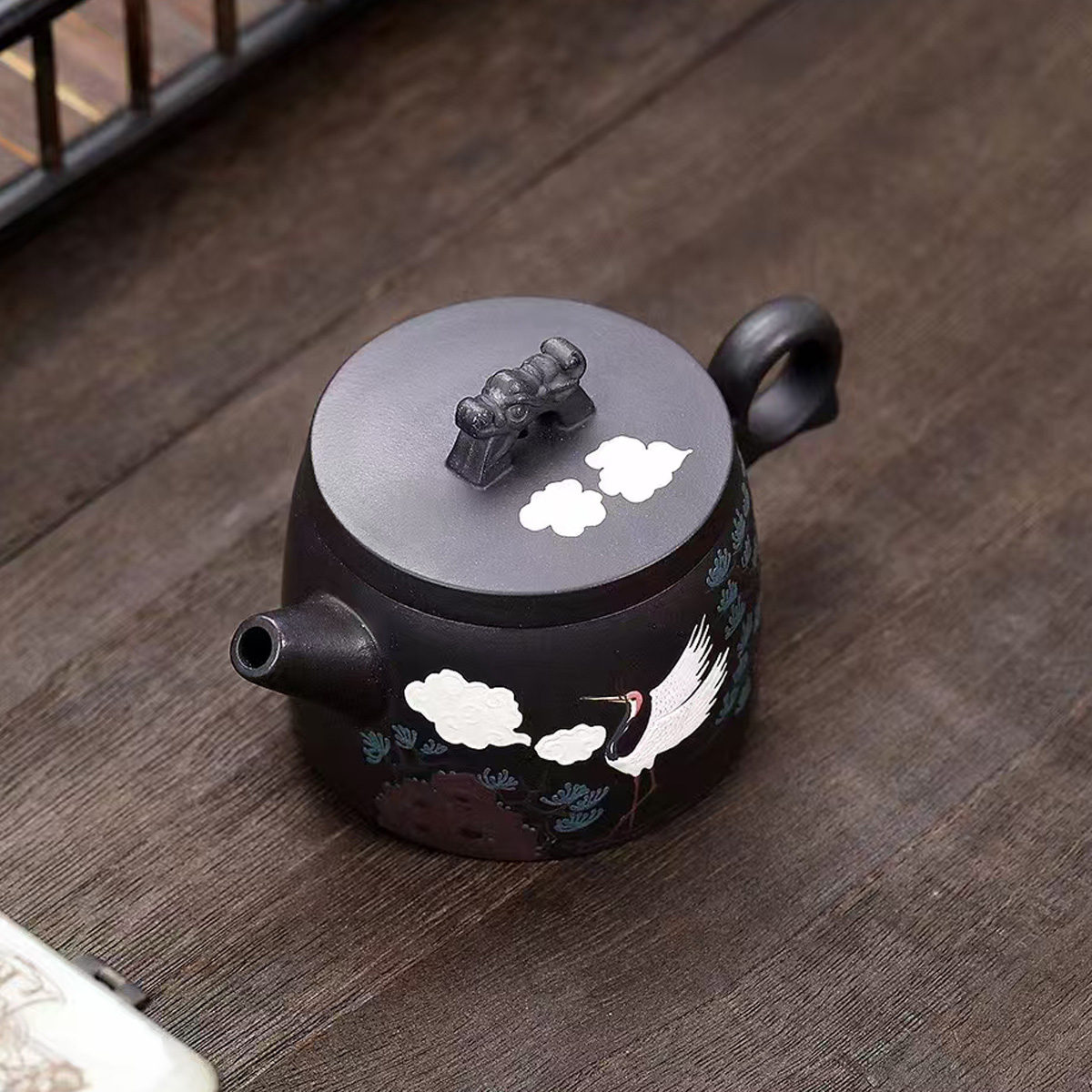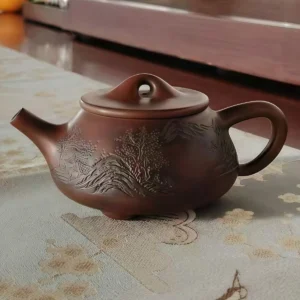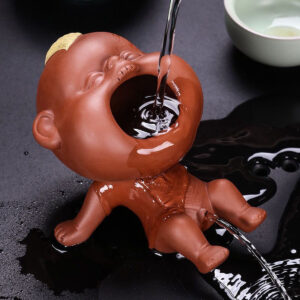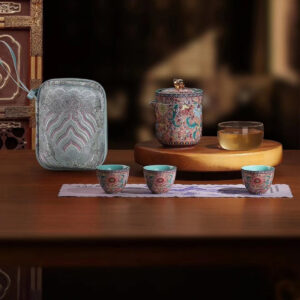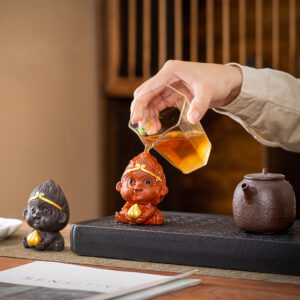Description
The Origin of Ceramics: Carrying the Brilliant 5,000-Year Chinese Culture
All tea enthusiasts should know that ceramics have a long and far-reaching influence across the world. There is even a saying that the name “China” originated from the global fame of Chinese porcelain (chinaware) trade, making porcelain a symbol of China—hence Europeans used “China” to refer to its place of origin.
In fact, ceramics encompass two distinct products: pottery and porcelain, collectively referred to as such.
Porcelain evolved from pottery, marking a significant development. It bears witness to the cultural heritage of China’s 5,000-year history and deserves respect from everyone.
China’s Four Great Potteries: Yixing Purple Clay Teapot
Yixing purple clay teapots, together with Guangxi Qinzhou Nixing pottery, Yunnan Jianshui purple pottery (also called Jianshui polychrome pottery), and Chongqing Rongchang pottery, are known as China’s four great ceramics.
The history of Yixing teapots can be traced back to the Northern Song Dynasty (circa 960-1127 AD). Renowned for their excellent breathability and tea aroma retention, they have become the preferred tea utensils. Combining calligraphy, painting, seal carving, and other art forms, their material properties and deep connection with tea culture make them the ideal choice for tea appreciation.
Historically, Yixing teapots were priceless due to their exquisite craftsmanship. After the 1950s, masters like Gu Jingzhou and Zhu Kexin (the “Seven Elders of Purple Clay”) revived traditional techniques, promoting diversified development in shapes and decorative arts. In 2006, Yixing purple clay pottery craftsmanship was listed as a national intangible cultural heritage.
Yixing purple clay teapots are not only a microcosm of Chinese ceramic history but also a model of traditional culture blending with modern life. Their historical legacy, craftsmanship wisdom, and cultural significance continue to shine in practical use, artistic value, and collectible appeal.
As each teapot is meticulously carved and colored by master artisans, and highly susceptible to damage during firing, every piece is one-of-a-kind – a truly unique artwork.
Fine tea deserves fine pots: How can one enjoy good tea without a proper teapot?
“Pine and Crane for Longevity”
The pine and crane motif holds profound symbolic meaning in traditional Chinese culture. Pine trees, evergreen and winter-defying, represent longevity. Cranes are revered as “celestial birds,” with Shen Jing Ji recording their ability to transform into immortals, symbolizing eternal life. Together, the “Pine and Crane for Longevity” imagery conveys wishes for enduring life while subtly celebrating nature’s timeless beauty.
Our “Pine and Crane for Longevity” Yixing Zisha Teapot
Crafted from premium black gold mineral clay by a national-level master artisan using full handmade techniques. The elegant vessel shape ensures exceptionally smooth pouring.
Capacity: 200ml

Daily Care of Yixing Zisha Teapots
Cleaning:
After each use, completely remove tea residue and rinse thoroughly with boiling water inside and out. Allow to air-dry naturally through the clay’s breathability – no internal scrubbing needed, and avoid chemical detergents.
Gently wipe the exterior with a clean, soft tea cloth to remove water stains and tea marks, which helps develop patina. Avoid vigorous rubbing.
Maintenance Tips:
While brewing, pour leftover tea over the teapot’s body and gently wipe with a tea cloth while warm. The clay’s absorbency will gradually incorporate tea oils, developing a mellow luster.
Maintain “one teapot for one tea type” (e.g., green tea teapot, rock tea teapot) to prevent flavor contamination.
The essence of Yixing teapot care lies in “silent nurturing”: through tea infusion, natural drying and patient use, the teapot gradually develops a “subtle inner glow.” A well-maintained zisha teapot not only enhances tea flavor but becomes a cherished companion that matures with time.




